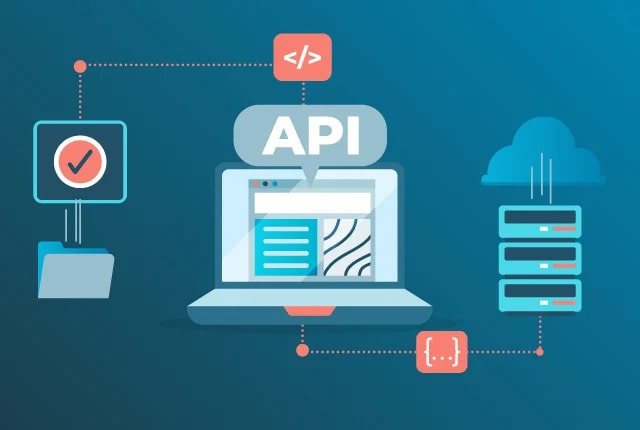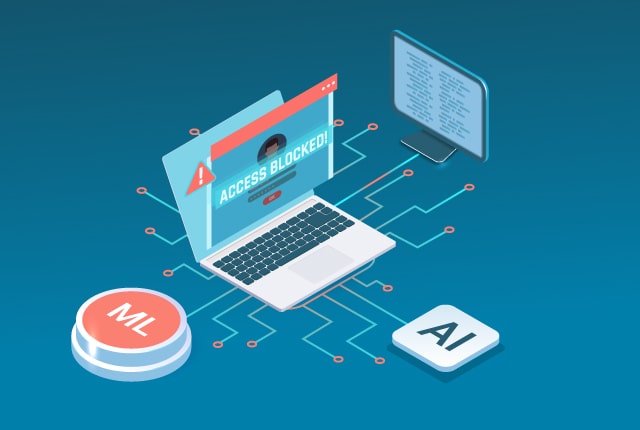QASource is a leading provider of comprehensive software security testing services, with a focus on ensuring the security and reliability of your applications. Our team of highly skilled security testing professionals leverages cutting-edge tools and techniques to thoroughly assess your systems and identify potential vulnerabilities, so you can mitigate risks and protect your organization from threats.
We are committed to deliver exceptional application security testing services that go above and beyond industry standards, providing you with the utmost confidence in your mobile, web, and desktop applications and safeguarding your valuable assets and reputation. Trust QASource for unparalleled expertise, experience, and dedication to security testing.
QASource’s Security Testing Services & Solutions
Our security testing experts employ a variety of techniques to make sure that our client’s software or application has been tested thoroughly with the most up to date tools and methodologies.
Penetration Testing Services
Cross-site Scripting, SQL Injection, Cross-site Request Forgery, and HTTP Response Splitting
App Level Testing Services
Integrity Testing, Authentication Testing, Authorization Testing, Availability Testing, and Non-Repudiation Testing
Testing DoS and DDoS Vulnerabilities
DoS Attacks using SQL Wildcards, DoS Locking Customer Accounts, DoS Buffer Overflows, User Input as a Loop Counter, Consuming the Disk, Storing Too Much Data in Session
Security Code Review
Define a Process to Perform Code Review, Identify Vulnerabilities, Find Incorrect/Poor Coding Techniques, Identify Security Issues Specific to Application Domain
Smart Contract Audit
Reviewing and analyzing the code of a smart contract, Identify and mitigate potential security risks, Identify Vulnerabilities
DevOps Infrastructure Audit
Assessing the technology, tools and processes used in a DevOps environment, Identify security issues specific to application CI/CD pipelines
QASource Security Testing Infrastructure
Center of excellence at QASource provide the highest level of security testing services to customers. Here are some key components of a software security testing infrastructure at QASource:
QASource's Security Testing Services & Methodology
- Evaluating your application’s security to current real-world attacks using different manual techniques
- Exposing security design flaws in your application
- Identifying security vulnerabilities from implementation errors
- Revealing shortcomings that arise from the application’s relationship to the rest of your IT infrastructure
- Building end user trust with increased overall application security
Security Testing Case Study
The client is a leading tire manufacturer, whose focus is to develop and manufacture a diverse portfolio of tires that deliver social and customer value. Being an industry leader in transportation, the client has a large fleet of software deployed that they use for different operations. They excel at best-in-class offerings to consumers around the world.
 Challenge
Challenge
Web application security testing is critical to ensure the security and reliability of web-based applications. Being a large size company, the customer possesses a large database of sensitive data including customer data and PII information which is an appealing target for hackers. To ensure that the existing security measures are effective enough to protect all the assets from unauthorized access, the customer decided to evaluate the level of security to eliminate any existing security issues.
 Solutions
Solutions
An expert team of security testing specialists was assigned to this project. All the sensitive areas were included in the scope and the team followed a four-step process:
The team started by gathering information about the application and its environment. This includes identifying web server type, web application framework, database, and API.
In this step, a mix of tools were used to do different kinds of security scans and identify the loopholes in the application.
Here, security engineers attempted to exploit any vulnerabilities identified in the previous steps. This involved attempts to gain unauthorized access to the application or its underlying systems or to escalate privileges.
Finally, the team documented all the identified vulnerabilities and provided recommendations for remediation. The report includes a description of the vulnerabilities, their potential impact, and a recommendation on ways to mitigate them.
 Results
Results
The penetration testing identified several vulnerabilities in the application, including:
The application was found to be vulnerable to SQL injection attacks, which could allow an attacker to access the database and steal sensitive information.
The application was also found to be vulnerable to XSS attacks, which could allow an attacker to execute malicious code in the user's browser.
Testers were able to send thousands of requests from a single source resulting in taking down the application for some time which leads to financial losses, and reputational damage.
The application was also found to be vulnerable to unauthorized access resulting in security breaches, data leaks, unauthorized modifications, and other malicious activities that can compromise the confidentiality of the application.
Based on the results of the penetration testing, the following recommendations were made to the client:
- Implement input validation to prevent SQL injection attacks.
- Implement measures to prevent XSS attacks, such as input filtering and output encoding.
- Implement a stronger password policy, requiring users to choose complex passwords and enforcing password expiration policies.
The penetration testing was successful in identifying several vulnerabilities in the web application. By addressing these vulnerabilities, we improved the security of the application and protect sensitive information.
Common Software Security Flaws
User Authentication Issues
Despite best intentions, passwords and user authentication are often security risks for software.
Sensitive Data Exposure
Protecting sensitive information, including passwords, credit card details and payment activities is critical for mobile applications.
Broken Access Controls
Incorrect account configurations or missing account restrictions can lead to users accessing sensitive data for accounts not associated with their log-in criteria.
URL Manipulation
URL manipulation can pose a threat to your system if your application features important ID and keys within any URL. These include but are not limited to session tokens, cookies, hidden fields and session IDs.
Cross Site Scripting
Cross-site scripting can pose a threat to your application if your system supports untrusted data on a webpage without proper validation.
Security Testing Blogs

Download Our Case Study Data Security Leader Boosts Product Quality With Automation and Expansive Test Coverage
Discover how QASource assisted a leading endpoint security provider streamlined its complex product workflows in a short time frame and adapt to lightning-fast release cycles.

Blog PostA Complete Guide To API Security Testing
With the rise of cloud computing, APIs have become an increasingly popular way of sharing data and services between applications. However, the increased use of APIs also means a greater risk of malicious activity. According to a report by Salt Security.

Blog PostThe Influence of AI and Machine Learning on Pen Testing
A few years ago, intelligent security tools were just a marketing gimmick. Today, artificial intelligence and machine learning are necessary parts of IT security operations. AI is changing the security testing industry.
Are You Ready To Take Your Software to the Next Level?
Schedule Time to Speak With an Expert.
Speak with One of Our Specialists to Learn How we can Help your Team:
Frequently Asked Questions
What are the tools and methodologies we employ for security testing?
We utilize a combination of industry-leading security testing tools and methodologies to ensure a thorough assessment. This includes automated vulnerability scanners, our built-in scripts and utilities, in-house security testing framework, penetration testing, and static and dynamic analysis techniques. Our approach is tailored to each project's specific requirements, ensuring comprehensive coverage of potential vulnerabilities.
What process do we follow when engaging in a security testing project?
- Requirement Gathering and Scoping: We collaborate with the client to understand the project's objectives, scope, and specific requirements.
- Environment Setup: We work with the client to set up the necessary security testing environment. This could involve creating replicas of production systems, configuring testing accounts, and ensuring access to relevant resources.
- Tool Selection and Configuration: Depending on the project's requirements, we select appropriate security testing tools. We configure these tools to suit the project's context.
- Initial Assessment and Discovery: We conduct an initial assessment to understand the application's architecture, functionalities, and potential attack surfaces. This step helps in tailoring our testing approach.
- Deliverables for Assessment Phase: The security test plan is the only deliverable, and we get it reviewed by the client.
- Security Testing Execution: Our security experts perform various security testing techniques to identify vulnerabilities. Vulnerabilities are documented in the form of bugs.
How does QASource structure your security testing report?
Our security testing reports are structured to provide clear and actionable insights. They typically include an executive summary detailing critical findings and risks and a detailed overview of the vulnerabilities section. For each vulnerability, remediation recommendations, including suggested fixes and best practices, are provided. We aim to ensure the report is informative and facilitates practical remediation efforts.
What types of security testing services does QASource offer?
We offer comprehensive security testing services to cater to your specific needs. These include:
- Web application penetration testing
- Mobile application penetration testing
- Desktop Application Security Testing
- Blockchain Security Testing
- Smart contract auditing
- IoT Security Testing
- API Security Testing
- LLM Security Testing
How can security testing benefit my business?
Security testing offers numerous benefits for your business:
- Protects sensitive data: By identifying and addressing vulnerabilities, you safeguard your confidential data, including customer information and intellectual property.
- Reduces risk of cyberattacks: Proactive security testing minimizes the risk of costly data breaches, system outages, and reputational damage caused by cyberattacks.
- Enhances customer trust: Strong security measures build trust with your customers, demonstrating your commitment to protecting their data.
- Ensures regulatory compliance: Security testing helps ensure compliance with industry regulations and data privacy laws.
- Improves overall security posture: By addressing vulnerabilities, you strengthen your security posture and proactively mitigate potential threats.
What makes QASource different for security testing needs?
We stand out from the competition due to several key factors:
- Experienced security specialists: Our team comprises highly skilled security professionals with extensive experience and certifications.
- Comprehensive testing approach: We offer various security testing services tailored to your needs and project requirements.
- Focus on business impact: We understand the business implications of security vulnerabilities and translate testing results into actionable insights.
- Proven methodology: Our established security testing methodology ensures thorough and efficient testing processes.
- Commitment to client satisfaction: We prioritize clear communication and collaboration throughout the engagement to ensure your satisfaction.
How can I get started with a security testing project?
Getting started with us for your security testing needs is simple. You can:
- Contact us: Contact our team for a free consultation to discuss your requirements and receive a customized quote.
- Download our resources: Explore our website for whitepapers, case studies, and other resources to learn more about security testing best practices.
- Meeting with our Security experts: Set up a call with our security SME’s and discuss the requirements.
What are the three phases of application security testing (AST)?
AST, or secure software development lifecycle (SDLC), involves integrating security testing throughout the software development process. Here are the three main phases:
- Early Stage: Focuses on secure design principles, threat modeling, and code reviews during development.
- Development and Integration: Includes static application security testing (SAST) to analyze code for vulnerabilities and dynamic application security testing (DAST) to test functionality and identify security issues in a running application.
- Pre-Deployment and Maintenance: Involves penetration testing and additional security assessments before deployment, followed by ongoing security monitoring and vulnerability management after release.